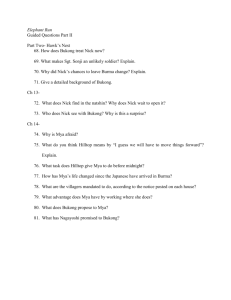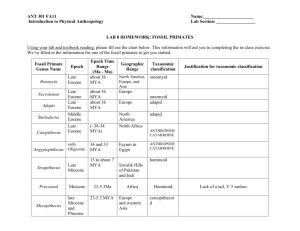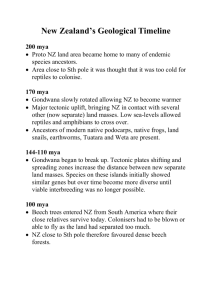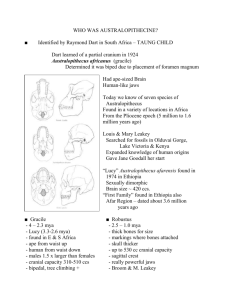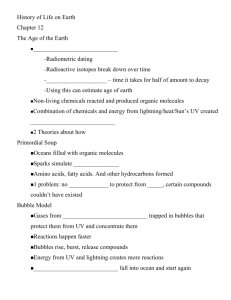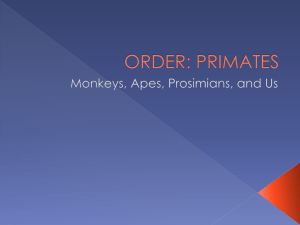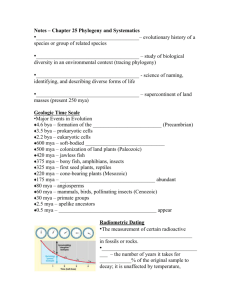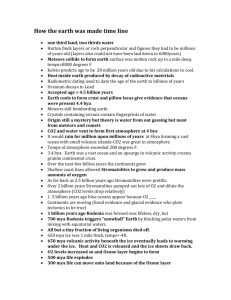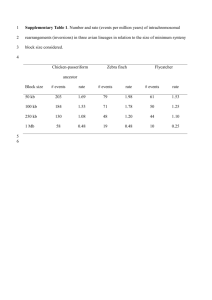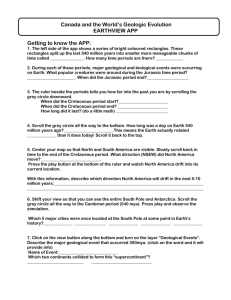Exam 1 Review
advertisement
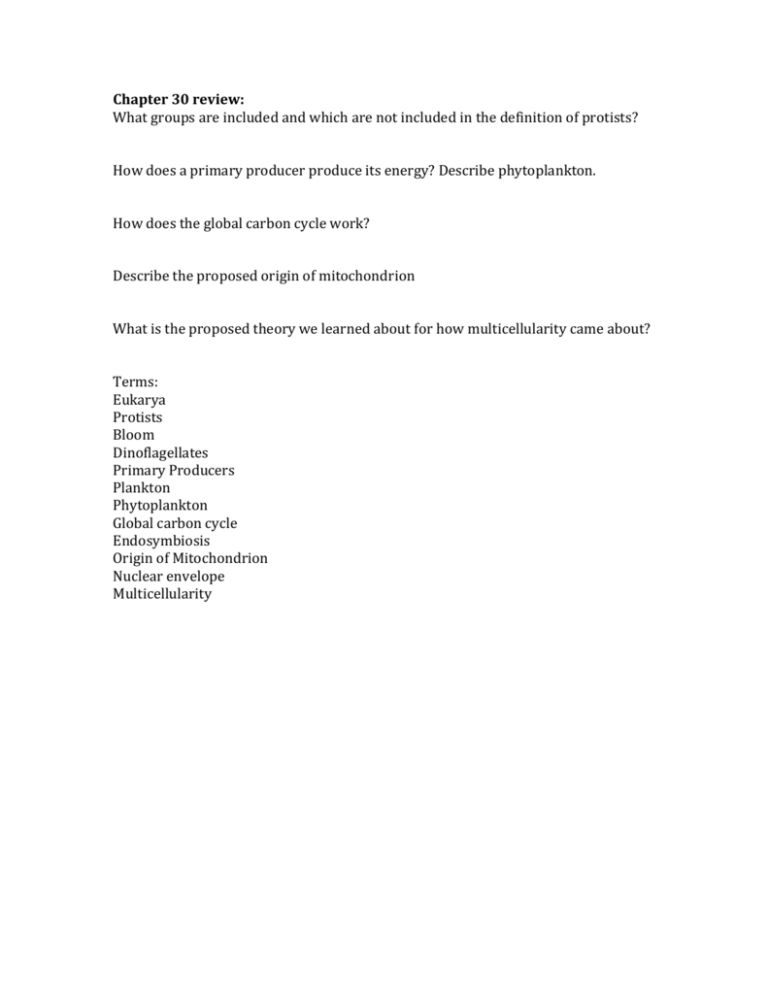
Chapter 30 review: What groups are included and which are not included in the definition of protists? How does a primary producer produce its energy? Describe phytoplankton. How does the global carbon cycle work? Describe the proposed origin of mitochondrion What is the proposed theory we learned about for how multicellularity came about? Terms: Eukarya Protists Bloom Dinoflagellates Primary Producers Plankton Phytoplankton Global carbon cycle Endosymbiosis Origin of Mitochondrion Nuclear envelope Multicellularity Practice Quiz: 1. Pasteur’s experiment proved that A. Cells can come into existence spontaneously B. That a swan-necked boiling flask keeps outside cells out of the mixture C. That a straight-necked boiling flask keeps outside cells out of the mixture D. None of the above 2. Lamarck is a scientist that created the theory of acquired traits. He claimed that if a giraffe stretched its neck over its lifetime, that its offspring would have an elongated neck. This statement is: True False 3. An example of a monophyletic group would be A. A group of organisms containing an ancestral organism and all of its descendants B. A group of organisms containing an ancestral organism and some of its descendants C. Multiple organisms containing no ancestral organism D. None of the above 4. The origins of life occurred during the A. Proterozoic period B. Archaean period C. Cambrian period D. None of the above 5. Adaptive radiation is the diversification of species from a common ancestor, this happens by A. Adapting to a specific environmental niche B. Competition and predation C. When a niche is unoccupied D. All of the above 6. Mammals showed up in the fossil record during the Triassic period, what was the approximate time of this occurance? A. 150-200 mya B. 200-250 mya C. 250-300 mya D. 300-350 mya 7. Koch’s Germ theory describes a link between a specific microbe and an infectious disease, what must happen in order to be considered a pathogenic microbe? I. Microbe must be present in the sick individual II. The microbe must be isolated and grown in culture III. A cultured from of the microbe must be able to infect the sick person A. I only B. I and II C. I and III D. I, II, and III 8. Archaea play an important role in Earth’s environment, in what environments do Archaea live? A. Extreme environments B. Soil C. Human intestines D. All of the above 9. (Cyanobacteria can be part of a symbiotic relationship with fungal hyphae and create lichens, they can also incorporate algae cells to create lichens!) Cyanobacteria were the first organisms to perform oxygenic photosynthesis. True False 10. Proteobacteria includes the well-studied E. Coli, which of the following are not done by some species of proteobacteria A. Cause the plague B. Cause Lyme disease C. Produce vinegar D. All of the above 11. Blooms occur when populations grow rapidly and reach high densities. Dinoflagellates are protists that A. Fix Nitrogen B. Consume harmful bacterium C. Produce toxins D. None of the Above 12. In the origin of mitochondrion Bacterium cells engulfed Archaeal cells True False Terms: 5 fundamental characteristics of life Theory Cell Cell theory Pasteur Hypothesis Evolution Natural selection Experimental design Heritability Fitness Speciation Eukaryotes Prokaryotes Phylogeny Taxonomy DNA Synapomorphy Clade Fossil Paleontologist Adaptive radiation Cambrian Explosion Mass extinction Background extinction Impact hypothesis Bacteria Archaea Microbes Pathogenic Extremophiles Germ Theory Antibiotics Enrichment cultures Metagenomics/Environmental sequencing Gram positive Gram negative Autotrophs Heterotrophs Phototrophs Chemoorganotrophs Chemolithotrophs Firmicutes Cyanobacteria Actinobacteria Spirochetes Chlamydiae Proteobacteria Dates: When the earth began to form When life began Time of the Precambrian Events and time of Proterozoic (2500-542 mya) Events and time of Archaean (4000-2500 mya) Time of Phanerozolic Eon (542 mya-present day) Events and time of Cambrian (542-488 mya) Events and time of Ordovician (448-443.7 mya) Events and time of Devonian (416-359.2 mya) Events and times of Triassic (251-199.6 mya) Events and time of Jurassic (199.6-145.5) Events and time of Plaeogene (65.5-23 mya) Events of Cambrian explosion
